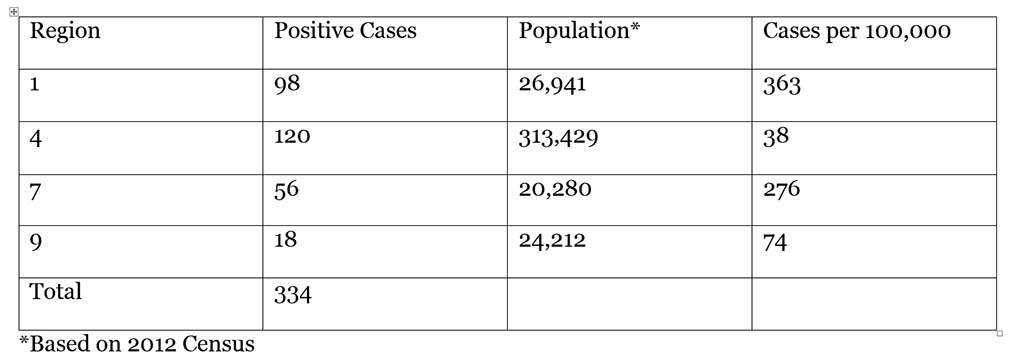Deputy Chief Medical Officer Dr. Karen Gordon-Boyle yesterday said that that a person is almost ten times more likely to get infected with COVID-19 in Region One than in Region Four, which illustrates the worrying situation in the hinterland region.
Gordon-Boyle made the disclosure during the latest COVID-19 update, which was released by the Ministry of Public Health (MoPH).
Gordon-Boyle reported that as of July 21st, there were two new positive cases based on the results available for 71 tests that were done.
The country has so far a recorded a total of 339 cases, with 19 COVID-related deaths. The number of active cases in institutional isolation is 157; 19 persons are in institutional quarantine and 2 persons are in the COVID-ICU.
To date, 163 persons have recovered. The total number of tests done is 5,099, while the number of persons tested is 3,769.
In providing the incidence rate by region, she emphasised that while the numbers in Region Four are higher, a person is on average 9.5 times more likely to be infected in Region One than in Region Four and 7 times more likely to get infected In Region Seven than in Region Four.
She explained that this is because the concentration of infections by population in regions One and Seven is far higher than in Region Four.
Further Dr. Gordon-Boyle noted that while the regions with the most active cases are regions One and Seven, attention must be focused on other regions, more specifically Region Nine, where cases have spiked within the last two weeks. “It is critical for us to monitor in the coming weeks the evolution of the incidence in all regions especially Region Nine, which shares the border with Brazil which is now the epicentre in Latin America,” she stated, while adding that it is likely that cross border movement has taken place, which is why there is a need for intensive case surveillance and tracking.






